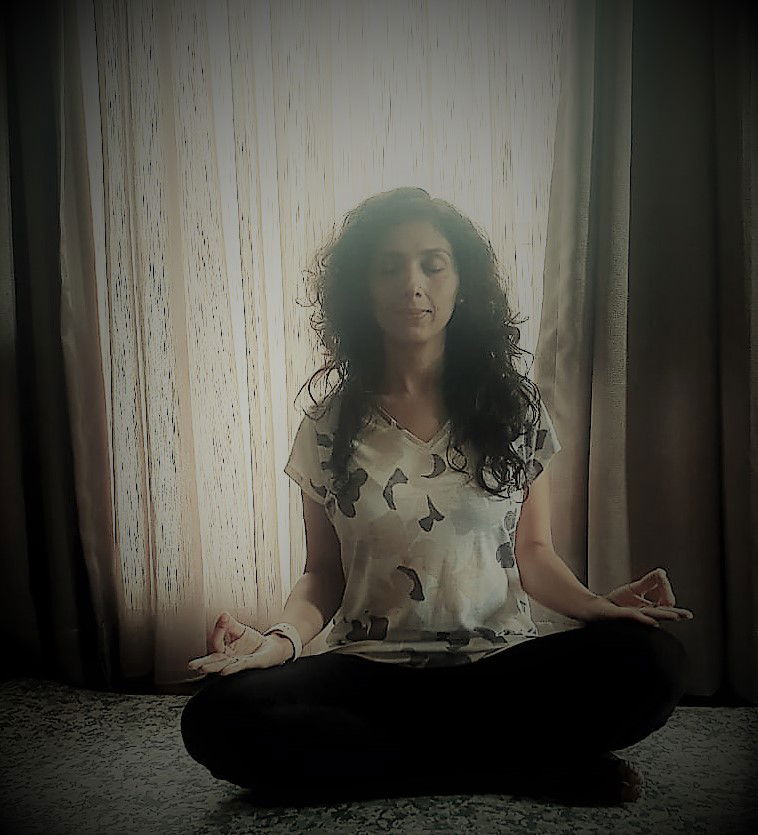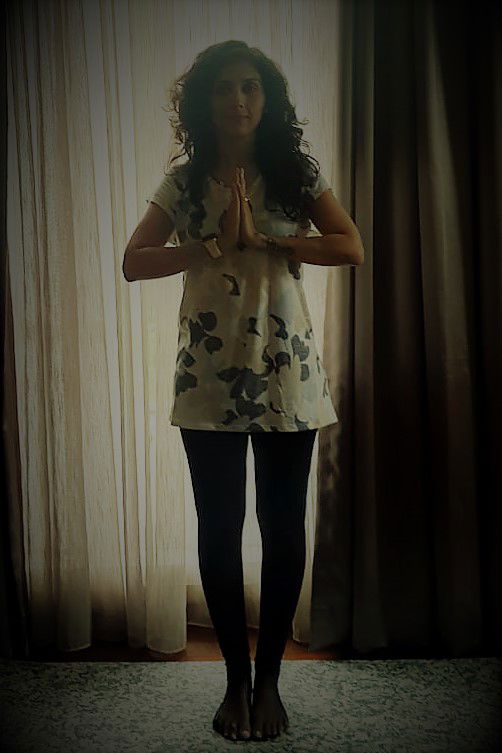Day-02 Initiation and Evolution of Yoga-Mitraasha


Namaste All My Yoga Yaatris! May Yog Bless You!

Knowledge of Yoga is infinite, boundless and timeless. “Learning Yoga is an everlasting journey that leads you within and Within is where you find the world of immortal bliss”. –Mitraasha
The idea behind running this 51 Days Yoga Consciousness series is to proffer my modest learnings and share the divine pearls of Yoga science with people at large. Let’s have a conjoint intent to learn, implement and extend the wisdom of Yoga with a positive co-action and harmonious reverberation amongst each other.
Tradition of Yoga is believed to have lived even before the beginning of civilization. The knowledge of yoga roots back to thousands of years ago, much before any religion or belief system came into existence. Yoga study has a historical, traditional as well as an educational background to it. In olden days as the teachers were highly experienced and reached higher state of consciousness, the students too desired to attain the same state and this knowledge or education was primarily imparted through a teacher-pupil setup known as Guru-Shishya Parampara . Yoga was being practised under the direct guidance of Guru and its spiritual value was given utmost reverence. It was a part of Upasana and yoga sadhana was incorporated in their rituals.
The oldest evidence of yogic meditation and asana is found in the Mohenjo-Daro Seal. But the Indian history believes that Yoga was practiced 5000 years before Christ as revealed in the earliest writings, the Vedas. In the yogic lore, Shiva is seen as the first yogi or Adiyogi, and the first Guru or the Adi Guru.
It is said that thousands of years ago, Adiyogi streamed his perspicacious knowledge into the acclaimed legendary Saptarishis or “seven sages” on the banks of the lake Kantisarovar in the Himalayas. The sages conveyed this spirituous wisdom of Yoga to various parts of the world, including Asia, the Middle East, Northern Africa and South America. Numerous researches by modern scholars depict an unwavering similarity between ancient cultures studied across the globe. Notably, it was in India where the study and practice of yoga philosophy expanded to its complete embodiment. Agastya, the Saptarishi who travelled across the Indian subcontinent, designed and taught this culture around a thorough yogic way of life. In that era Yoga existed in folk traditions, Indus valley civilization, Vedic and Upanishadic period, Buddhist and Jain traditions, Darshanas, epics of Mahabharat, Smritis, Puranas and Ramayana, theistic traditions of Shaivas, Vaishnavas, and Tantric traditions.
Numerous fossil remains of Indus Saraswati valley civilization including Yogic motives, seals and figures depicting Yoga Sadhana indicate the existence of Yoga in ancient India. The seals of idols of mother Goddess and phallic symbols are highly indicative of Tantra Yoga.
Many mystical traditions of South Asia were inbuilt with Yoga at its core. Their rituals were primarily based on yogic practices. Sun was considered of the highest stature during the vedic period. It is understood that hence the formation and practice of ‘Surya namaskara’ may have been devised later due to this ascendancy.
There is historical substantiation of Yoga being existing in the pre-Vedic period (2700 B.C.), and after that until Patanjali’s period. The main sources of information and knowledge about Yoga practices and related literature from this period, are obtainable through Ancient Vedas (4), Upanishads(108), Smritis, Teachings of Buddhism, Jainism, Panini, Epics (2), Puranas (18) etc.
Classical Period :The period between 500 BC – 800 A.D., a very preeminent period in the history and development of Yoga, is tentatively considered as the Classical period of Yoga. Around 250 B.C, Maharshi Patanjali laid an order into Yoga techniques and compiled them in a book called Yoga sutra, which is about 196 short verses. Patanjali organized the practice of yoga into an “eight limbed path” containing the steps and stages towards obtaining Samadhi or enlightenment. Yoga Sutra consists of everything related to man’s evolution and is considered as the basics of Yoga. It is like a grammar book on Spirituality. Patanjali is often considered the father of yoga and his Yoga-Sûtras still strongly influence most styles of modern yoga. After Patanjali, many Sages and Yoga Masters accorded immensely for the preservation and development of the yogic culture through their well documented practices and literature.
Post Classical Period: The period AD 800–1700 is known as the post-classical period wherein the illustrious teachings of great Acharyas such as Adi Shankracharya, Ramanujacharya and Madhavacharya became renowned and influential. Additionally, the teachings of Surdas, Tulsidas, Purandaradasa and Mirabai also contributed to the noteworthy yogic practices during this period. Yoga masters produced a system of practices devised to revitalize the body and extend life. They repudiated the teachings of the ancient Vedas and accepted the physical body as the tool to reach enlightenment. They created radical techniques to aid cleanse the body and mind which dissolves the tangles that abide us to our physical entity. This finding of the mind-body connections and body centered practices led to the formation of Hath Yoga. In this period, the great Nath Yogis like Matsyendaranath, Gorakshanath, Chauranginath, Swatmaram Suri, Gheranda and Shrinivasa Bhatt taught and made Hatha Yoga practices popular. Besides the above mentioned, there exists the Yoga Upanishads–few of them written probably at the beginning of the era, the Yogi Yajnavalkya as well as the Hatha Yoga Pradipika. Several Puranas too dealt with Yoga around this time (AD 1000), as do later texts like Gheranda Samhita. The commentaries on the Yoga Sutra by Vyasa, Vachaspati Mishra, Vijnana Bhiksu and others came just a few hundred years ago.
Modern Period: The period between 1700 – 1900 A.D. is known as the Modern period during which the eminent Yogacharya- Ramana Maharshi, Ramakrishna Paramhansa, Paramhansa Yogananda, Vivekananda etc. have imparted their teachings greatly for the development of Raja Yoga. Vedanta, Bhakti yoga, Nathayoga or Hatha-yoga flourished during this period. The Shadanga-yoga of Goraksha Satakam, Chaturanga-yoga of Hathayogapradipika, Saptanga-yoga of Gheranda Samhita, were the main precepts of Hatha-yoga. In the late 1800-and early 1900, many Yoga Guru’s travel to the west attracted huge attention and followers. The earliest such noted incidence was of Swami Vivekananda whose speech on yoga and oneness of world’s religions in Chicago gained much popularity at the parliament of religions in 1839. Hath Yoga became more commonly well known in 1920s and 1930s in India too. Krishnamacharya founded the first Hatha Yoga school in Mysore in 1924 and in 1936 Sivananda established on the banks of the holy Ganges River, the Divine Life Society. Later was an astute author who wrote over 200 books on yoga, created nine ashrams and several yoga centers across the world. And under Krishnamacharya’s guidance three very eminent students flourished that later took his legacy ahead and augmented the popularity of Hatha Yoga: they were B.K.S. Iyengar, T.K.V. Desikachar and Pattabhi Jois. In 1947, Indra Devi opened her yoga studio in Hollywood. Following the trait, many other Indian and western gurus have gained many followers, became popular and made hatha yoga famous worldwide. Other Yoga masters like Sri Aurobindo, Maharishi Mahesh Yogi, Swami Kuvalayananda, Shri Yogendra, Swami Shivananda, Swami Rama, Acharya Rajneesh, Pattabhijois, Swami Satyananda Sarasvati, Sadguru and others have been instrumental in expansion of yogic practices across the globe.
Present times: At present times , it is widely believed that yoga practices contribute towards the safeguarding, upkeeping and furtherance of one’s health. Over the years, Yoga has expanded and grown all over the world and millions of people have reaped benefits of Yoga practices which have been conserved, maintained and handed over through the profound teachings of great Yoga Masters from ancient time to the current day.
Several prominent styles which are popular amongst the practitioners include:
The practice of Yoga is thriving and expanding more vivaciously by each passing day.
Thought of the day: “Yoga is a light, which once lit will never dim. The better you practice, the brighter your flame.”- B.K.S Iyenger
DISCLAIMER: The author is solely responsible for the views expressed in this article. The author carries the responsibility for citing and/or licensing of images utilized within the text.
